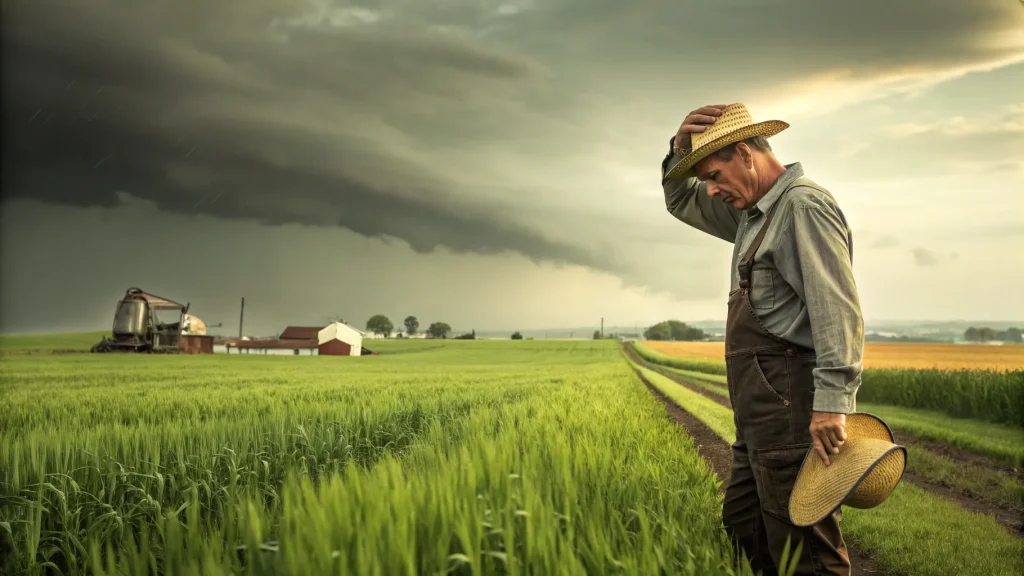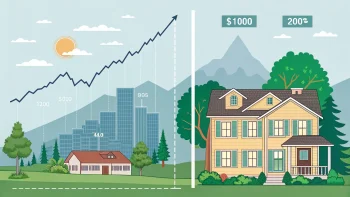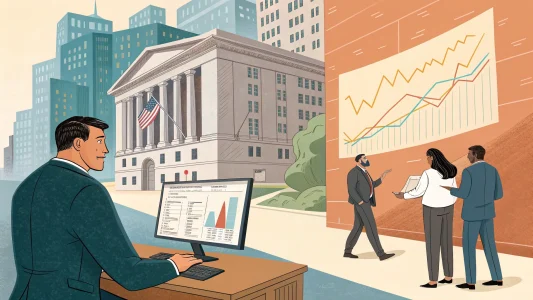I am Taylor Sohns, CEO of LifeGoal Wealth Advisors and a CIMA and CFP. I spend my days examining how policy affects real people and their real cash flows. Few stories are as stark as what is happening on America’s farms. Prices are slipping, costs are rising, and a core voting bloc is feeling the pinch. The main issue is tariffs. They are reshaping crop markets, trade routes, and farm budgets. The question hanging over this moment is straightforward: Can political loyalty withstand a severe financial blow?
“78% of farmers voted for Donald Trump, but his tariff policy is hitting them harder than anyone.”
Table of Contents
ToggleThe Trade-Off Facing Rural America
Farmers prize fair prices and stable buyers. They also value strong national policy and tough negotiating. Those goals can clash. Tariffs try to pressure foreign nations. But they also raise costs at home and invite retaliation. In farming, the fallout becomes apparent quickly. Crops are global commodities. Inputs are global too. You cannot wall off either side of the ledger. This is why the pain looks so sharp right now in the Midwest and Plains.
The current squeeze looks like this. Crop prices sit near post-pandemic lows. Soybean sales are the worst in twenty years. China has paused purchases for months. Expenses are racing higher. Fertilizer costs have increased by approximately 35% this year due to tariff pressure. Labor costs are rising as immigration crackdowns shrink the workforce. Revenues melt while expenses surge. That is a losing equation on any ledger.
View this post on Instagram
How Tariffs Ripple Through the Farm Economy
Tariffs operate like a tax on trade. They push up the cost of imported goods. Foreign nations often respond in kind. That is where U.S. farmers feel it most. Retaliatory tariffs make American crops less attractive abroad. Shipments slow or stop. Prices drop at the farm gate. It feels sudden because the market moves fast. Buyers swap sources. Supply chains re-route. Once lost, those channels can be hard to win back.
Fertilizer is the other hit. Much of it is tied to global inputs and trade flows. Tariffs increase the price of those inputs. A 35% jump in a farm’s biggest expense is a body blow. It eats into margins more than any single line item. Add on energy and equipment parts that move through global supply, and the cost stack climbs even higher.
Prices Fall While Costs Climb
Lower grain prices force tough choices. Some farms can hedge. Others sell off stored grain. Many have little room after recent capital purchases. Cash rent contracts lock in fixed costs, providing stability for both parties. Crop insurance helps against disasters, not trade wars. Bankers look at debt-service ratios and debt-to-asset levels. If net income dips, credit tightens. That adds stress before planting decisions and during harvest.
On the cost side, the budget shock is real. Fertilizer spikes hit corn hardest. Soybean growers feel it too. Herbicides and pesticides have also risen. Diesel costs matter during planting, spraying, and harvest. Repairs and parts cost more and take longer to arrive. Each slight increase erodes the margin. Taken together, they can wipe it out.
China’s Pullback and the Soybean Shock
China is the top export destination for U.S. soybeans in most years. A pause in purchases takes a big bite out of demand. When a buyer of that size steps back, price pressure shows up across the board. The data point that soybean sales are the worst in twenty years shows the scale of the hit. Grain elevators see it. Basis widens. Storage fills. Cash prices lag futures. It becomes a grind to move product at a profit.
The longer the pause, the more significant the shift in global trade patterns. Brazil picks up share. Shipping firms adjust routes. Crushers abroad find new steady suppliers. That does not flip back with the wave of a hand. Trade is sticky once re-routed.
Labor Pressures and Immigration Policy
Labor is tight across agriculture. Dairy, fruit, and vegetable operations, and large row-crop farms depend on seasonal and year-round workers. Crackdowns and tighter screening reduce the available pool of candidates. Wages rise. Overtime rises. Some acres go unharvested. Others shift to crops that fit smaller crews. Productivity drops when crews are short or inexperienced.
For farms already squeezed on price, higher labor costs are hard to absorb. It adds to the expense stack that tariffs have already lifted. Time-sensitive windows for planting and harvest make this an acute risk. Miss the window, and yield suffers.
Bailouts Versus Market Access
The idea now floating in policy circles is to use tariff revenue to bail out farmers. We have seen this before. In 2018, federal payments helped offset the earlier round of trade retaliation. Many accepted the aid. They also said they would rather have open markets than checks. That remains true today. A payment can bridge a season. It does not fix lost buyers or cure weak prices.
There is also a moral hazard. If aid is always expected, risk signals dull. Farmers are tough and practical. Most want fair competition and stable rules, not ongoing transfers. They want to sell into markets without extra barriers. They want to plan over years, not months.
Can Loyalty Survive a Financial Hit?
It is no secret that about 78% of farmers voted for Donald Trump. That support was built on tax relief, regulatory rollback, and promises to fight for better trade deals. Support can coexist with frustration. Many farmers are loyal but candid. They will say when policy costs them money. They will also weigh what comes next. If bailouts are offered again, some will accept them while still pressing for market access.
Politics in rural counties runs on trust and results. If tariffs persist and retaliation holds, price weakness may linger. If negotiations open doors, prices can find support. The clock matters. Planting, harvest, repayment schedules, and equipment financing do not wait for policy headlines.
Key Points at a Glance
- Crop prices are near post-pandemic lows; soybeans face the worst sales in twenty years.
- China has not bought U.S. soybeans since May, tied to reciprocal tariffs.
- Fertilizer costs are up approximately 35% this year, putting pressure on margins.
- Labor costs are rising as the workforce shrinks under stricter immigration rules.
- Tariff revenue bailouts are back on the table, echoing the 2018 debate.
- Farmer loyalty to Trump remains high, but financial strain is a real concern.
What Farmers Can Do Right Now
Hope is not a plan. While policy is debated, farms can act. First, shore up risk control. Tighten hedging rules. Use options where it makes sense. Lock in profitable margins when futures allow it. Use scale-in strategies rather than gamble on a single price point. Avoid over-hedging if basis risk looks wide.
Second, map cash flow under stress cases. Run budgets with lower price assumptions and higher input costs. Push those models across the full crop year. Include debt service, family living costs, and equipment repairs. Consider prepay discounts and whether they actually save money after accounting for interest. Small gains add up when margins are thin.
Third, sharpen input buying. Pool orders with neighbors if possible. Work with co-ops on timing. Seek flexible contracts for fertilizer with price caps or indexed pricing. Consider soil testing and variable-rate applications to prevent overuse. Every pound saved reduces exposure to price spikes.
Fourth, plan labor early. Secure returning crews—Cross-train workers to cover gaps. Invest in tools that reduce manual steps where cost-effective. Avoid acres that cannot be serviced on time.
Fifth, protect the balance sheet. Delay non-essential capital purchases. Keep liquidity where possible. Maintain steady communication with bankers. Surprises hurt credit lines more than bad news delivered early.
Community Effects and the Rural Economy
Farm stress is not isolated. Main Street feels it. Equipment dealers see fewer orders. Co-ops carry more receivables. Local diners and shops see slower traffic. County tax bases lean on farm health. School funding and road budgets can suffer if assessed values decline. The ripple is wide and real.
Relief checks help stop the bleeding for a season. They do not revive lost trade channels. That is why market access is the preferred cure for most producers and the towns that serve them.
How Investors Should Read This
I look at this through both the farmer’s eye and the investor’s lens. Ag cycles have a way of swinging too far in both directions. When policy adds a shock, volatility rises. That can hit stocks tied to farm inputs, machinery, and transport. It can also lift firms in countries that gain share. For diversified investors, this is a story about supply chains and pricing power. Companies that can absorb higher costs tend to maintain their margins; those that cannot will struggle.
For income investors, watch credit quality in rural loan books. Community banks with high farm exposure may see rising delinquencies if this strain lasts. For commodities, spreads and basis are the details that matter. They tell you how fast stress is flowing from futures to cash markets.
Policy Choices Ahead
Leaders face a fork in the road. One path relies on tariffs and offsets the impact on farmers with aid. The other seeks negotiated access that lowers barriers on both sides. The first can work as a temporary bridge. The second offers a firmer long-run footing. Trade deals are slow, but they set rules that markets can price. The shorter the policy whiplash, the better for planning and capital investment on the farm.
Smart policy can also help with inputs. Encouraging the supply of fertilizer and key chemicals can reduce import dependence; streamlined permits for domestic production, where safe and economically feasible, can also help. Efficient guest worker programs can ease labor shortages without sacrificing security. These are practical steps that address costs from multiple angles.
What I Hear From Producers
Conversations with farmers often sound like this: “We like tough trade policy, but we need buyers.” “We will take a check if we have to, but we want markets open.” “We can handle risk, just give us rules we can plan around.” Farmers are resilient. They run lean. They adapt. But they are not made of magic. Trade blocks and input spikes can overwhelm even the most experienced operators if they persist for an extended period.
I respect their grit. I also worry about the young farmer with new loans and thin equity. Or the multi-generation farm that took on debt for new bins or a planter, now facing weaker cash prices. These are real people holding tight to land and family legacy.
A Straight Answer to a Hard Question
Can Donald Trump keep his strongest supporters while tariffs hit farmers the hardest? He might, if the policy path soon brings better trade terms and stronger prices. He might not, if the pain grows and relief checks become the norm. Farmers value results. They want their work to pay. They want to sell soybeans, corn, and wheat at prices that justify the effort and risk.
As a market professional, I focus on what can be controlled. Reduce risk where possible. Keep liquidity. Make surgical cuts rather than making slash-and-burn cuts. Watch policy signals, but do not bet the farm on any single headline. Weather, yields, and global demand will continue to be the primary drivers of the year. Policy can help or hurt at the margin. Right now, it is doing both.
The hard truth is simple. Exports move prices. Inputs set costs. When both lean the wrong way, the squeeze is severe. Getting trade flowing again would relieve the pressure faster than any check can. That is the outcome most farmers want. It is also the outcome that would benefit rural towns and provide investors with more precise lines of sight.
I hope the next steps point to open markets, stable rules, and a fair shot for U.S. producers. Until then, careful planning and clear eyes are the best tools on the farm and in the portfolio.

















